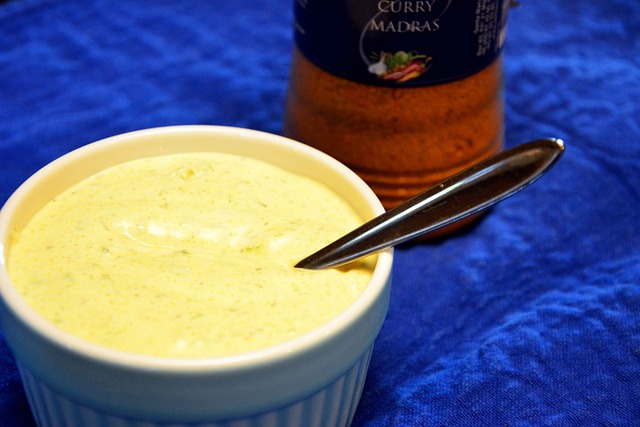
Gravy is a wonderful thing to have on hand. It’s warming, hearty, and can be used for a variety of dishes – from breakfast biscuits and gravy to French onion soup or as the sauce in an Italian meatball sandwich.
But what if you want to freeze it? Will freezing affect its texture? More specifically, can you freeze gravy made with cornstarch?
The answer is yes! You can freeze gravy made with cornstarch. However, be aware that freezing can compromise the thickness of the gravy due to the cornstarch presence.
Gravy freezes well and will keep for up to six months in the freezer. To defrost, place in the refrigerator overnight or into a bowl of warm water until it’s at room temperature. Reheat gradually over low heat, stirring often.
Why does cornstarch make gravy thicken?
Cornstarch is made up of long chains of glucose molecules. So when they’re added to liquids, the chains are able to form bonds with other molecules (proteins like those found in egg yolks).
These bonds trap water molecules. Whenever you add cornstarch to a liquid, the result is thicker gravy.
If you’ve ever boiled a saucepan of water on the stove and noticed that it slowly thickens as it passes through the heat, this is an example of how cornstarch works. You’re actually seeing the starch form bonds with other molecules!
When you’re making gravy, you have two options for thickening: flour or cornstarch. Why would you want to thicken gravy? For one thing, it makes the gravy taste better.
Think of a soup with a plain broth – it’s fine but comparatively bland. But add some cornstarch and make that broth thicker, more substantial – suddenly it transforms into something much more delicious!
Thickeners also add body to soups and gravies so they seem heartier and fuller.
How to freeze gravy made with cornstarch?
To freeze gravy made with cornstarch, simply add the cornstarch right at the end of cooking.
Fresh batches of gravy usually won’t thicken enough for you to see a difference in thickness, so it’s better to make saucy dishes like French onion soup or meatball sandwiches (sauce on top!).
However, if you’re making a batch of stovetop mac and cheese – adding the cornstarch at the end will give your dish that coveted thick sauce. A great use for leftover mac and cheese!
Here’s the step by step guide on how to freeze gravy with cornstarch:
1. Let the gravy cool completely
2. Transfer to freezer-safe containers (try to avoid using plastic) and freeze for up to 6 months.
3. Defrost completely in the refrigerator overnight or into a bowl of warm water until it’s at room temperature. Reheat gradually over low heat, stirring often. Make sure not to let the gravy burn on the bottom.
Can you freeze gravy made with flour?
As I mentioned above, you can freeze gravy made with cornstarch. But can you freeze gravy made with flour too?
The answer is not as clear-cut. Let’s talk about why flour and cornstarch are different in the first place.
When it comes to thickening, both starches (flour and cornstarch) work by forming bonds with other molecules like milk proteins or egg yolks to create a texture that seems more substantial than it actually is.
However, once frozen your body won’t be able to break down these bonds and release the water – meaning the protein chains will never return to the same state they were before heating them up!
In other words, freezing changes how your food behaves, and you’ll have to be patient with it!
If you want to try freezing gravy made with flour, I recommend first creating a small batch and freeze it. If it freezes well, then make more of a larger batch to freeze because the results can get messy.
What do I mean by that? When freezing gravy made with flour, the sauce will break down into lumps in the freezer over time.
This may not happen right away (it could take several weeks), but once your food starts to collect ice crystals, this process is irreversible. Freezing doesn’t just change how your food behaves after thawing – it also changes its chemical structure!
Why does flour make gravy lumpy? Can you fix it?
The reason flour is often lumpy in gravy is actually a result of a beautiful scientific process!
When you use cornstarch, the starch molecules absorb water and then release it when heated. This changes their size and affects where they fit in with other particles, expanding over time to make your sauce thicker. You can see this happening right before your eyes!
In contrast, flour doesn’t form specific bonds with other molecules – instead, it disrupts them by coating everything around it and forming lumps. It’s like putting sunglasses on everyone at an outdoor party – nobody can tell who is talking to whom!
So why add flour if there are several potential problems? Why not just use cornstarch? The answer is simple:
Flour makes gravy much thicker than cornstarch does! This is great for dishes like lasagna that rely on thick sauces to add body and substance.
It’s also useful when making meatloaf, which benefits from a thick, dense layer of ketchup on top as opposed to a runny glaze. Meatballs are another example – the sauce helps keep them moist and adds a flavor all at once.
When it comes to flavor, flour (unlike cornstarch) forms strong bonds with fats like butter or oil which means you can go light on those ingredients while still achieving rich flavors! Why wouldn’t you use flour in gravy?
Why not just use more cornstarch instead if it’s more convenient? The reason is actually pretty simple:
As I mentioned above, when you use flour in your gravy it will start turning into lumps right before your eyes! Why does this happen?
The answer is temperature. When you heat up flour-based gravies too much, the dry gluten protein chains get all tangled up and gel together like cooked spaghetti – making very tough lumps that are nearly impossible to break apart once they freeze (even in a non-freezer environment).
Why not just reheat until smooth then serve again? The problem with this method is that as soon as you add more liquid back into the mixture after freezing, the proteins move again and start getting tangled up over time.
Can you refreeze gravy?
Despite the lumps, refreezing gravy is possible if you do it correctly.
To refreeze your gravy after freezing, I recommend adding more liquid to thin it out. This way, the frozen chunks will be dispersed throughout a thinner sauce making them less noticeable!
I also recommend not refreezing water or broth-based gravies since they usually don’t freeze into lumps and can refreeze normally without causing any problems.
If you want a step by step guide, here’s what to do:
1. First, thaw it in the microwave for about 30-45 seconds or until it’s room temperature again. This is called “refreezing” instead of refilling!
2. Next, add more cornstarch if your gravy was too watery and refilled multiple times or refreeze another time using fresh liquid leftovers from a previous meal (like soup).
3. Finally, reheat the mixture on the stovetop over medium heat until thickened and serve immediately!
How long does gravy last unrefrigerated?
If gravy is unrefrigerated at room temperature, it can only last within 1-2 hours. Longer than that the gravy should be discarded.
It’s important to remember that unrefrigerated food is especially vulnerable to bacteria. This means that if you plan on storing your gravy unrefrigerated for any substantial period of time, make sure it is very hot (145 degrees F or more) before serving!
If you’re not sure whether or not it’s safe to eat unrefrigerated gravy, then cook it in the microwave until piping hot and put a layer of plastic wrap between the container and lid to ensure there are no leaks that could cause bacterial growth.
How long does beef gravy last in the fridge?
At 40-50 degrees Fahrenheit, the beef gravy will last between 3-5 days in the refrigerator.
However, due to its high water content and low salt content (especially when you use flour), it’s not recommended for long-term storage.
Final Thoughts
Freezing gravy is a great way to preserve it and keep it fresh. To freeze your cornstarch-based gravy, just let it cool before freezing in an airtight container or zip lock bag for up to 3 to 6 months.
You can also prepare the day’s batch of gravy ahead of time by cooking without adding any additional ingredients (like milk) then store in freezer-safe containers with lids overnight so that when you’re ready to use them, all you have to do is add the other ingredients!

